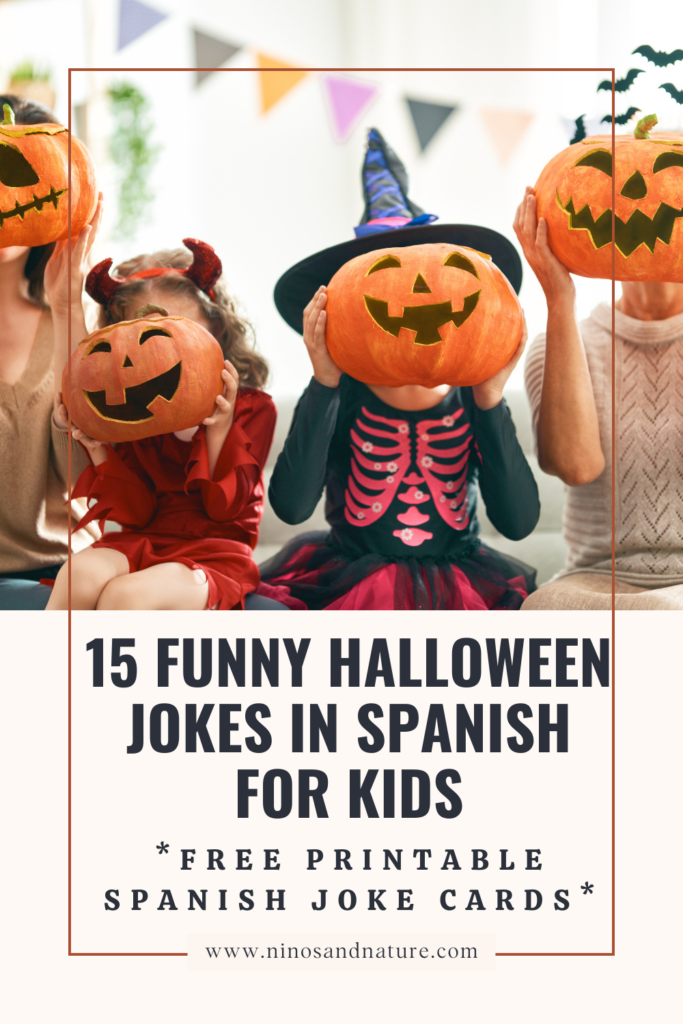
15 Funny Halloween Jokes in Spanish for Bilingual Kids
In this post: Find 15 funny Halloween jokes in Spanish for bilingual kids along with tips to make language learning fun. Keep scrolling to grab FREE Spanish Halloween joke cards!
Halloween is all about spooky fun, and what better way to celebrate than with a few laughs? If you’re raising bilingual kids, adding Spanish jokes to your Halloween traditions is a great way to blend language learning with holiday excitement. These silly, spooky Spanish jokes are perfect for kids and will have the whole family giggling. Plus, don’t forget to grab your free printable joke cards at the end of the post!
Table of Contents
Making Spanish Learning Fun with Jokes
These Spanish Halloween jokes are more than just a way to get a laugh—they’re a playful way to immerse kids in Spanish learning without it feeling like a chore. By using jokes, you’re encouraging natural curiosity and helping kids see the fun side of mastering a new language.
Breaking Down Barriers: Humor is a great icebreaker, and these jokes allow kids to practice speaking Spanish in a comfortable, low-pressure way. When kids laugh, they’re more likely to remember the vocabulary and structures that made the joke funny.
Building Confidence: Kids love being able to tell jokes to others. By learning these jokes in Spanish, they can show off their language skills to friends and family, which helps build their confidence in speaking Spanish.
A Shared Experience: Whether you’re telling these jokes at a Halloween party, during family dinner, or on a car ride, these jokes create opportunities for shared laughter. They bring the family together and make language learning a group experience that everyone can enjoy.
Language Exploration: Encourage kids to come up with their own spooky jokes in Spanish! It sparks creativity and gives them a chance to use what they’ve learned in a fun, inventive way.
How to Teach Spanish Jokes to Beginners & Intermediates
Teaching jokes in Spanish is a great way to make language learning fun and interactive. Bilingual kids should pick them up right away, but if you’re working with beginning Spanish learners or intermediate speakers, here’s how you can introduce these jokes to get them excited about practicing their Spanish:
Start with Simple Vocabulary: Begin by explaining key words in each joke. For example, before telling a joke about esqueletos (skeletons) or fantasmas (ghosts), make sure the kids understand those words. It helps them follow along and enjoy the punchline!
Break Down the Joke: After sharing the joke, go over each part. Ask questions like, “Why do you think this is funny?” or “What does this word mean in English?” This process helps them connect the humor with their understanding of the language.
Use Visuals: Kids love visual aids, so pairing each joke with a quick drawing or acting it out can make the learning experience more engaging. You can even create flashcards with the joke on one side and a picture or translation on the other.
Encourage Participation: Let learners try telling the jokes themselves! Whether they’re telling the jokes to each other or to family members, giving them the opportunity to be the joke-teller boosts their confidence and reinforces their learning.
Have Fun with It: The goal is to keep learning light and enjoyable. Laugh with your learners and celebrate when they successfully deliver a joke. The more fun they have, the more eager they’ll be to keep learning.
By using jokes, you’re creating an enjoyable and memorable way to reinforce Spanish language skills. The humor sticks, and so does the language!
15 Funny Halloween Jokes in Spanish for Kids
Here’s a collection of jokes that are sure to get everyone laughing. Each joke comes with an English translation, making it easy for both bilingual families and those still learning Spanish to join in the fun! Remember this blog post is equipped with text to speech in Spanish – to hear the joke read aloud en español, simply highlight the text and click the blue speaker button.
¿Qué hace un vampiro conduciendo un tractor por la noche?
-Sembrar el pánico
What does a vampire do driving a tractor at night? Spread panic.
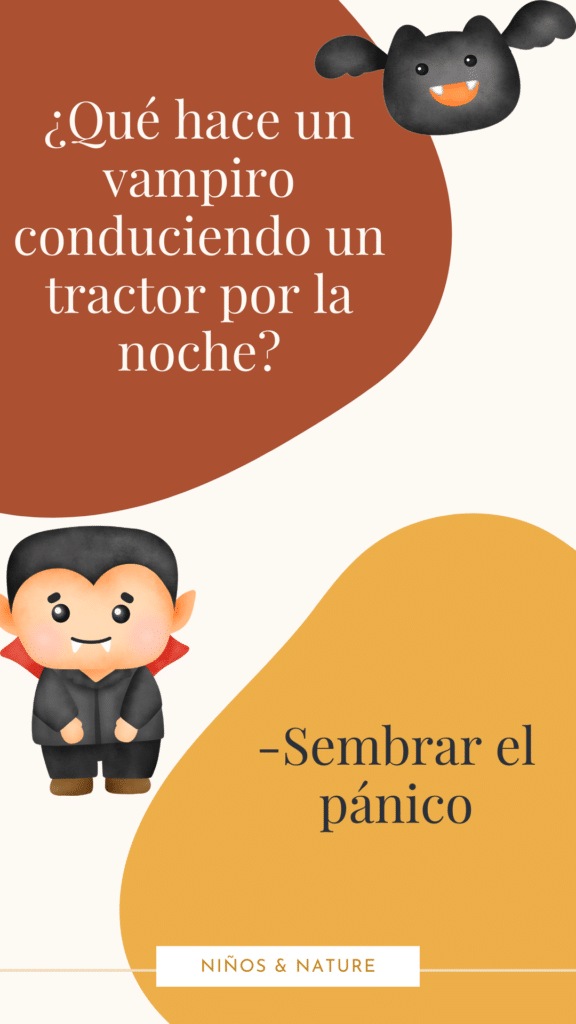
¿Por qué a los esqueletos no les gustan los días de lluvia?
-Porque se calan hasta los huesos!
Why don’t skeletons like rainy days? Because it soaks them to the bone.
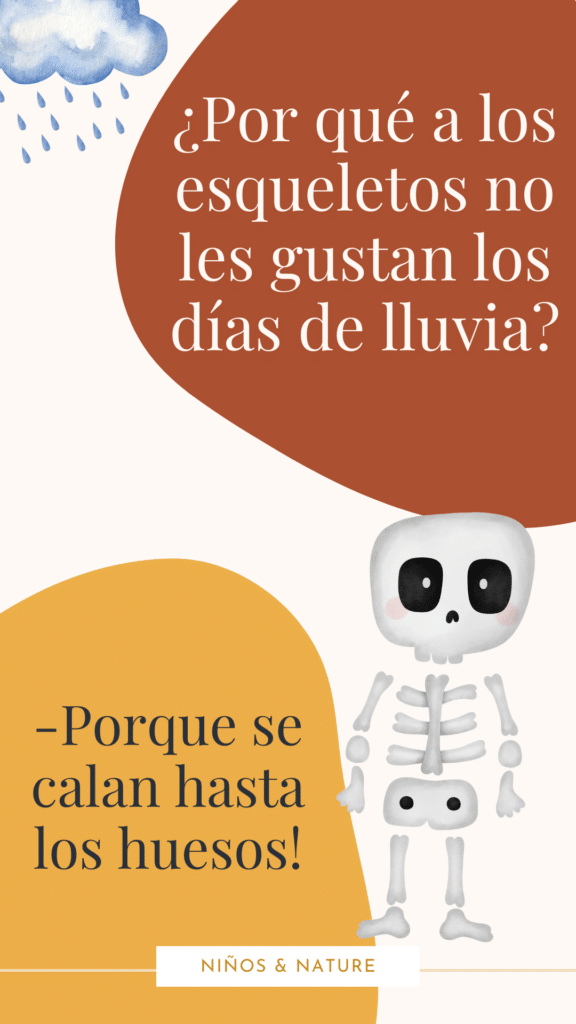
¿Cuál es el día favorito de los fantasmas?
-El Día de BUUU-jas.
What is a ghost’s favorite day? The day of BUU-jas! – This is a play on the word brujas (witch in spanish) because El día de brujas is another way to saying halloween en español.
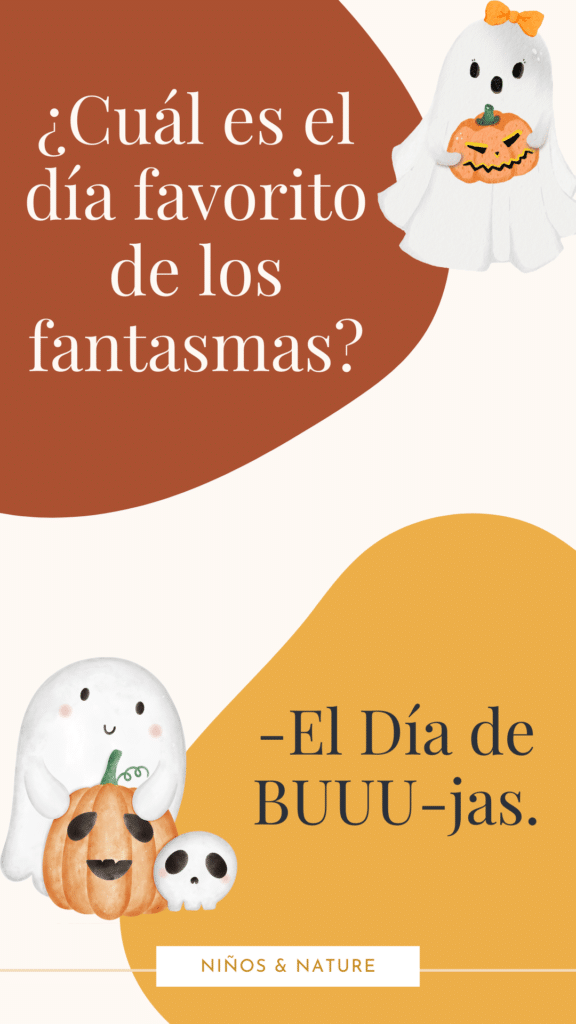
¿Adonde van las momias durante sus vacaciones?
-Al mar muerto
Where do mummies go on vacation? To the Dead Sea.
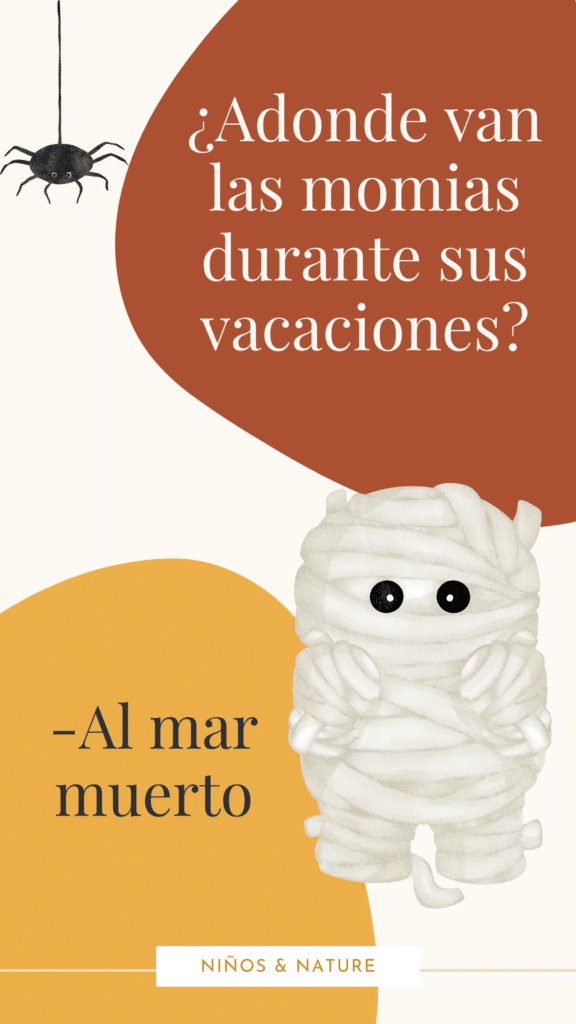
¿Por qué le dieron un premio al espantapájaros?
-¡Porque era sobresaliente en su campo!
Why did the scarecrow get an award? Because he was outstanding in his field.
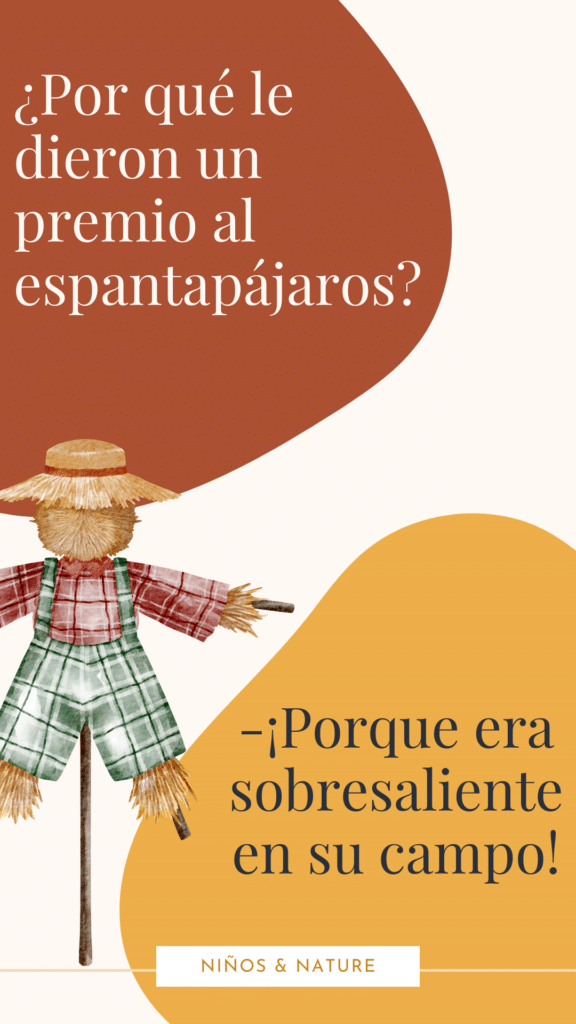
¿En qué se parece una bruja y el fin de semana?
-En que las dos se van volando.
What do a witch and the weekend have in common? They both fly by.
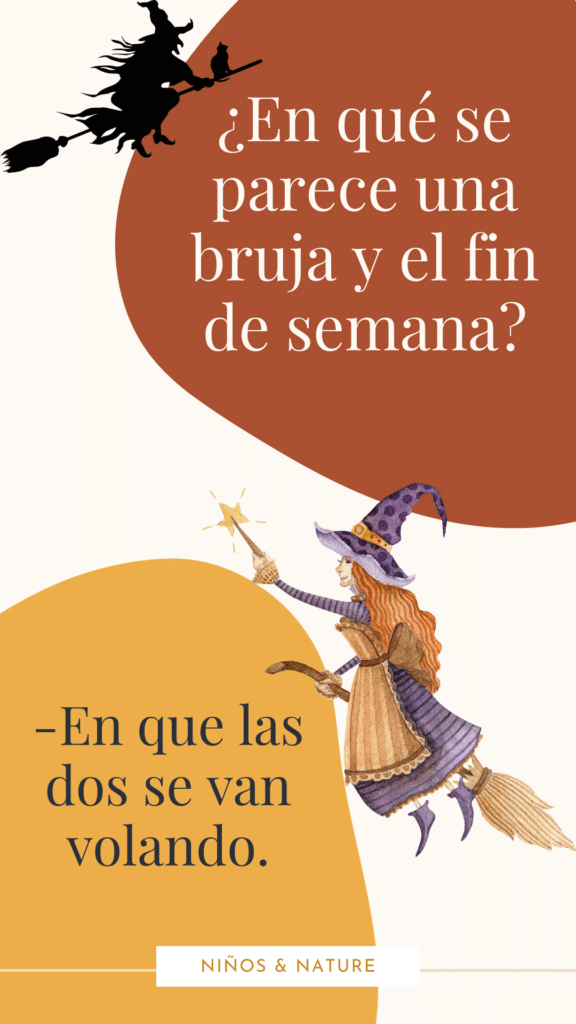
¿Qué le gusta pintar el fantasma?
-Di-buuuu-jos.
What do the ghost like to draw? Di-buuu-jos
(A pun on dibujos meaning drawings in Spanish.)
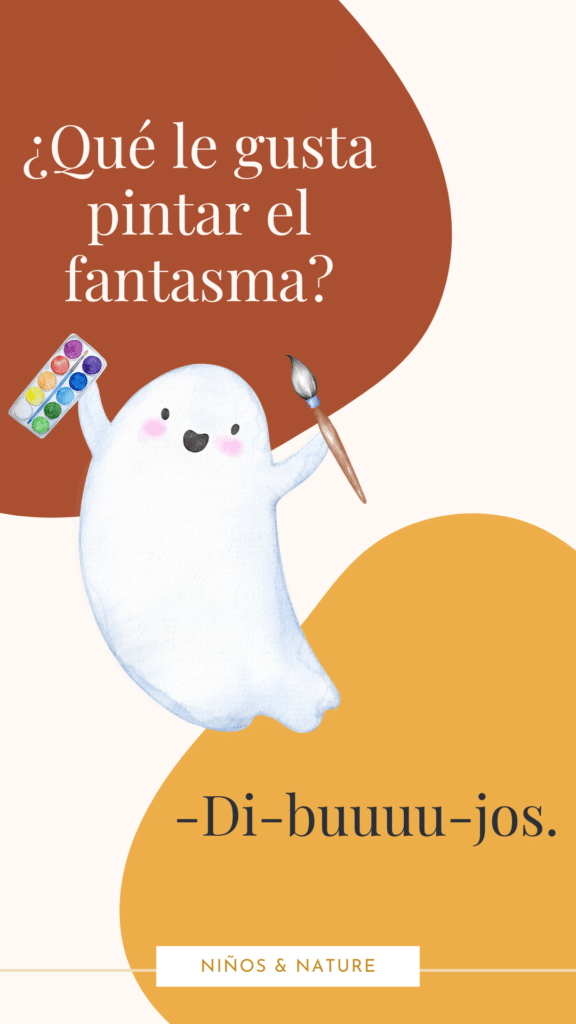
¿Por qué las calabazas nunca tienen hambre?
-Porque siempre están llenas de semillas.
Why are pumpkins never hungry? Because they’re always full of seeds.
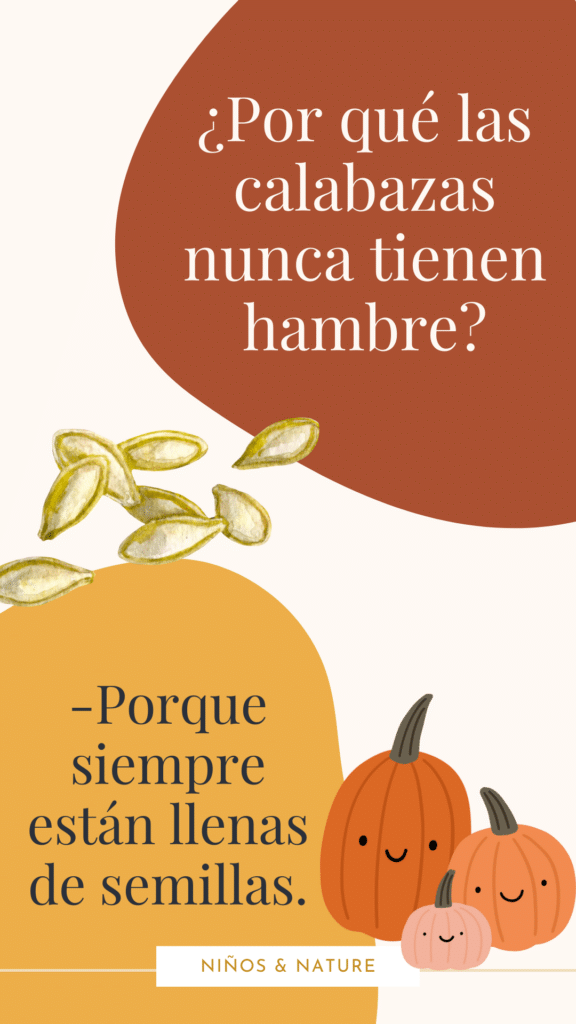
¿Cómo se llaman los zombies que hablan español e inglés?
-¡Zombilingües!
What do you call zombies that speak Spanish and English? Zombilinguals!
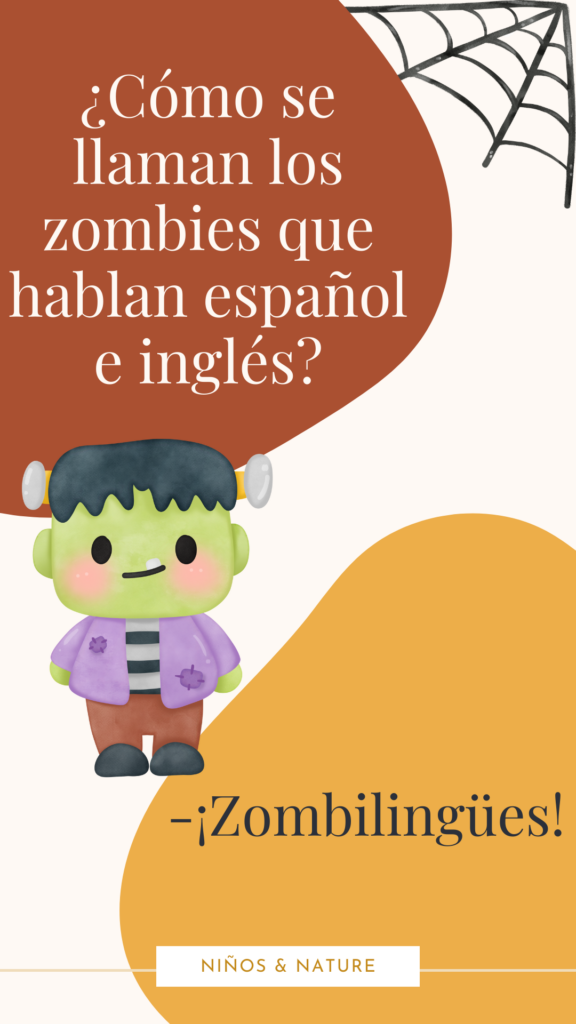
¿Dónde guardan los vampiros su dinero?
-¡En un banco de sangre!
Where do vampires keep their money? In a blood bank!
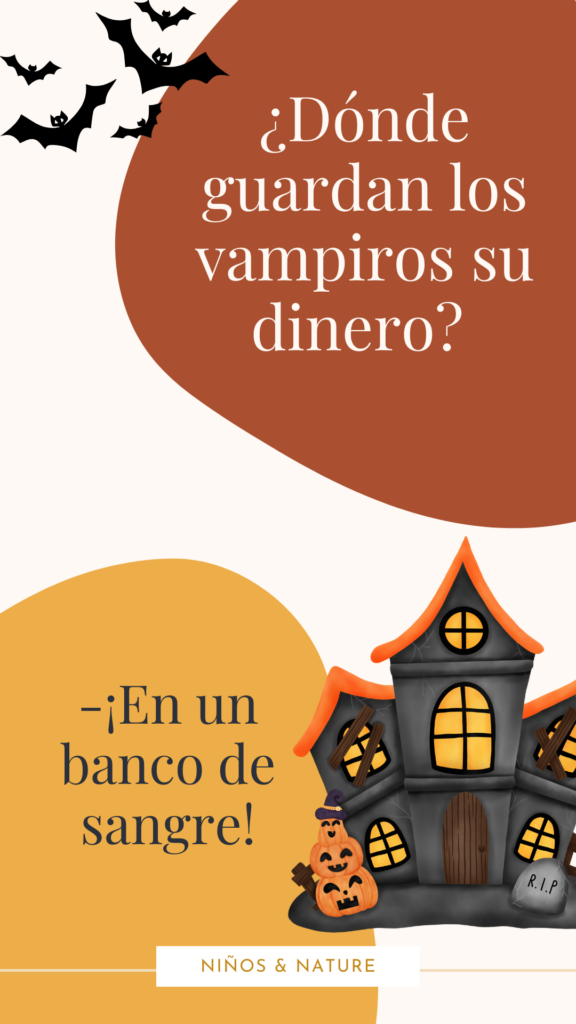
¿Cuándo da mala suerte encontrarse con un gato negro?
-Cuando eres un ratón…
When is it bad luck to run into a black cat? When you’re a mouse.
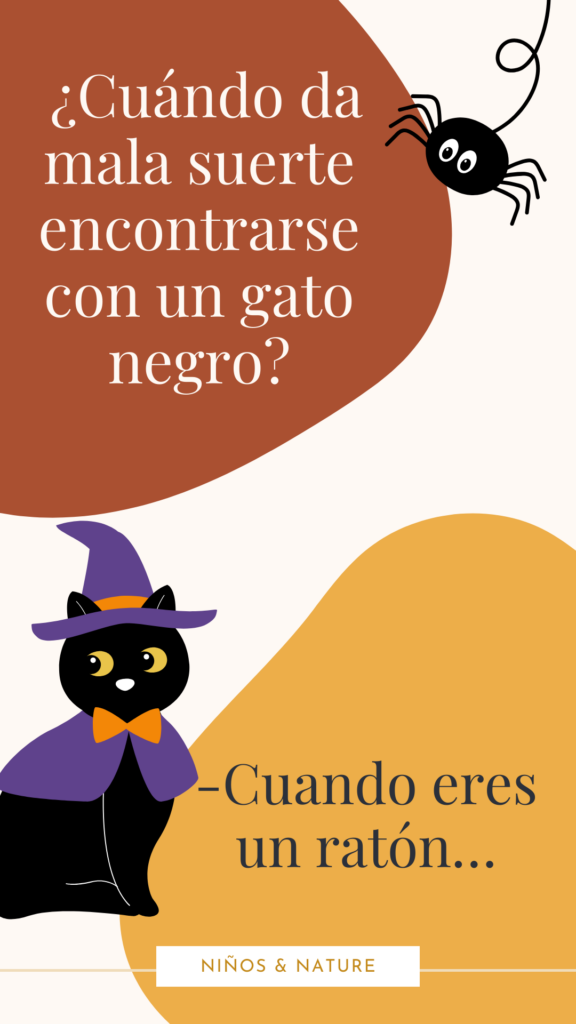
¿Sabes por qué mamá lleva las sábanas sucias a ver una peli de miedo?
-¡Para que se queden blancas del susto!
Do you know why mom takes the dirty sheets to watch a scary movie? So they turn white from fright!
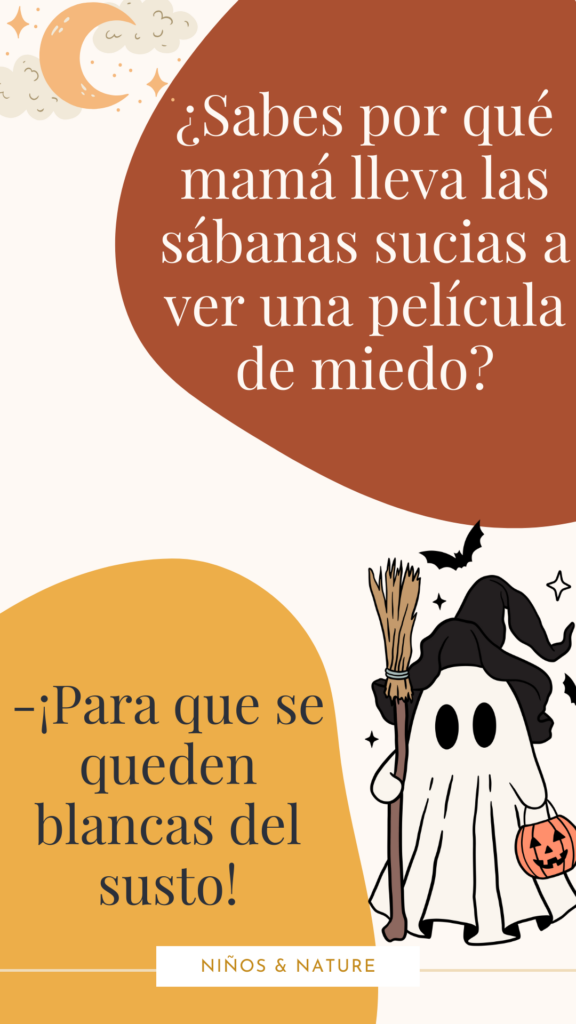
¿Qué comen los fantasmas de los pandas?
-¡BAM-BÚ!
What do panda ghosts eat? BAM-BOO!
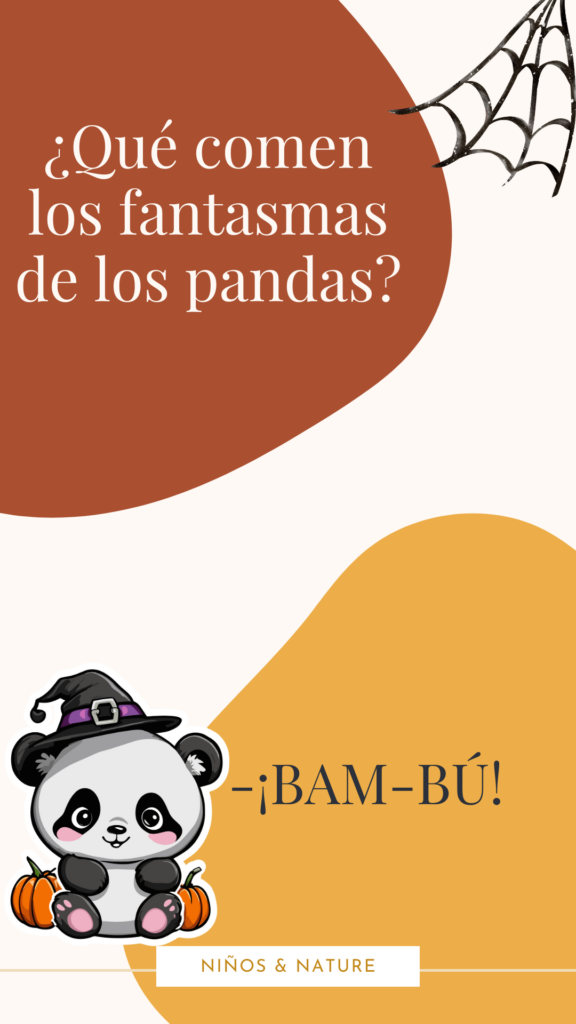
¿Por qué los fantasmas son tan malos en mentir?
-Porque se puede ver a través de ellos.
Why are ghosts so bad at lying? Because you can see right through them.
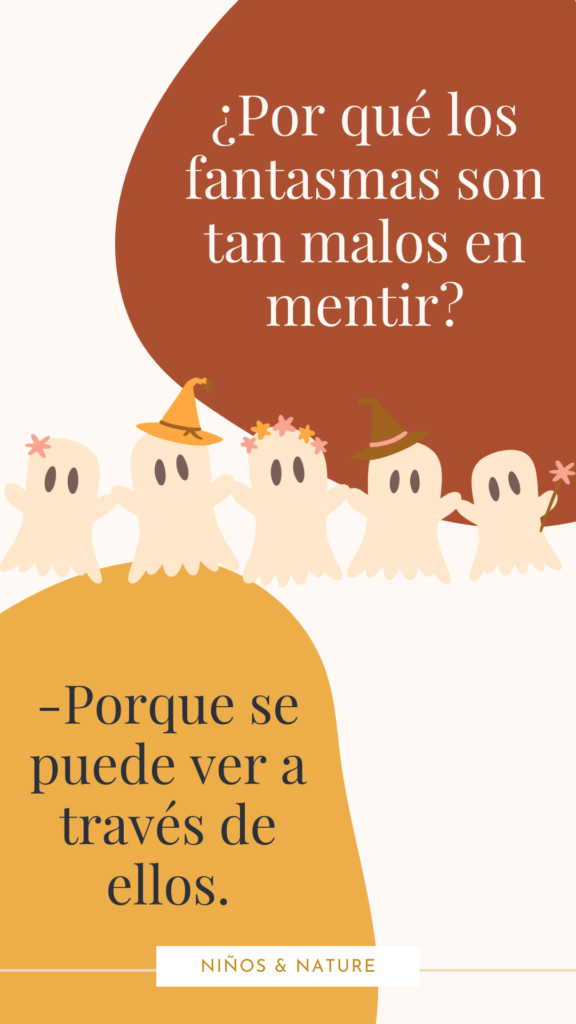
¿Por qué no cenó el espantapájaros?
-Ya estaba relleno.
Why didn’t the scarecrow eat dinner? It was already stuffed.
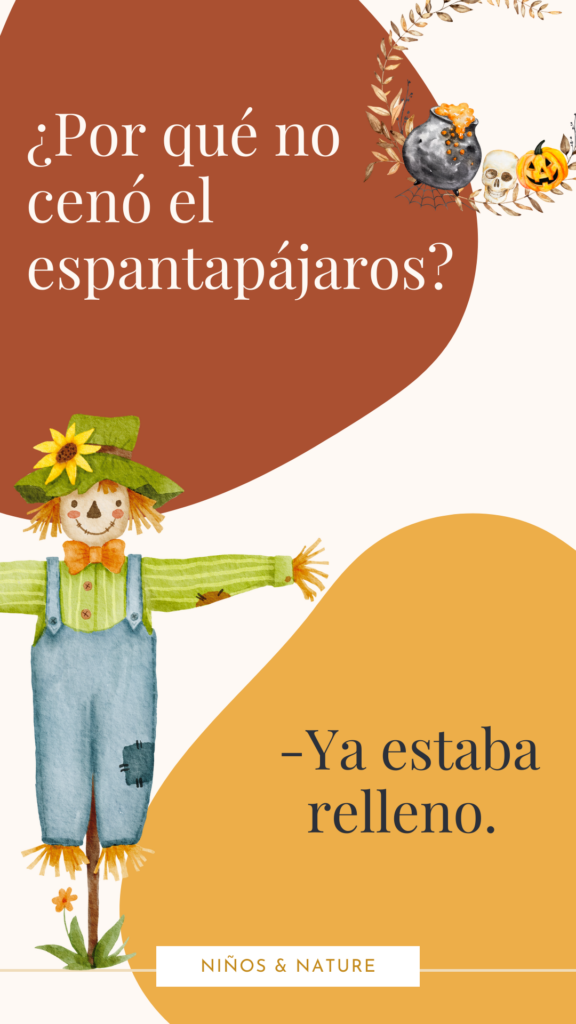
Spanish Halloween Books we Love
Looking for even more ways to celebrate Halloween in Spanish? Check out our top 5 favorite Spanish books about Halloween! These books are perfect for bilingual families or anyone looking to add a fun, spooky twist to their Spanish learning. From cute stories about friendly ghosts to adventurous tales with pumpkins and witches, these books will have your kids excited to read in Spanish!
Check out our top picks below, or shop the full list of Halloween books in Spanish here!
Grab Your Free Printable Halloween Spanish Joke Lunchbox Cards!
Looking for a fun way to add some spooky Halloween fun to your kids’ day in Spanish? Download these free printable Halloween joke cards in Spanish! They’re perfect for slipping into lunchboxes, sharing with friends, or even handing out during trick-or-treating. These silly jokes will bring lots of laughs while helping your bilingual kids practice their Spanish.
How to Use:
- Print the cards on cardstock for durability.
- Cut them out and add one to your child’s lunchbox each day leading up to Halloween.
- Share them with friends, family, or classmates for a fun Spanish-learning surprise.
↓↓↓ grab your freebie ↓↓↓
Halloween is the perfect time to add a little fun and creativity to your Spanish learning routine. Whether you’re sharing these funny Halloween jokes in Spanish, reading Halloween-themed Spanish books, or using my free printable Spanish joke cards, there are so many ways to bring the magic of Halloween to life while practicing Spanish with your kids.
Like this post? Share & Save it!
